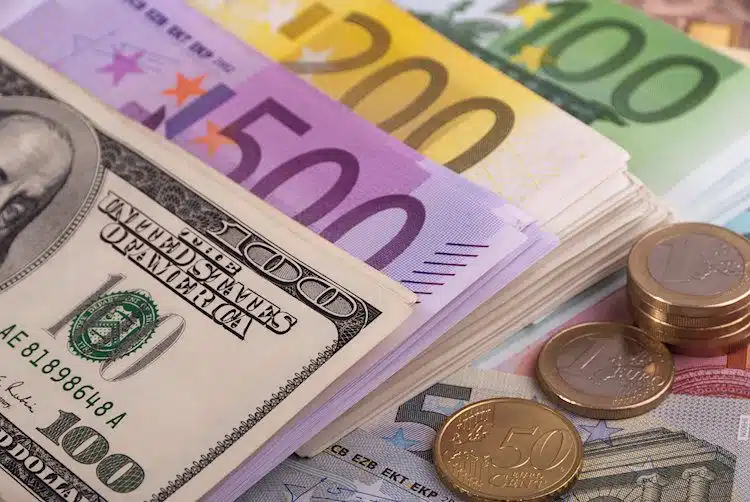The Euro recently experienced a slight gain of 1.9% in just three days, but it appears to be limping back once more. According to economists at Société Générale, the pair is expected to suffer a deeper decline should it break under 1.0520.
While an initial bounce is currently underway, it remains to be seen whether the pair can reclaim 1.0910/1.0940, which represents the 76.4% retracement of the recent down move. Failure to do so could mean persistence in correction.
If the pair does breach the recent trough at 1.0520, a deeper decline is likely to occur. The next potential supports will then be expected to be at 1.0330, followed by 1.0220/1.0200, which represents the peak of September last year.
Despite the potential decline in the Euro, some reasons may explain this economic phenomenon.
First, the Eurozone economy is still recovering at a slower pace, and it is currently lagging behind other advanced economies. The rate of vaccination in the Eurozone is also relatively slower than other countries. These factors will affect the Euro, and its downward trend is likely the result of the continued underperformance of the Eurozone.
Second, the Euro could be affected by the Biden administration’s stimulus package, which is likely to cause the US economy to recover faster. With a strong economic recovery in the US, the dollar may become more attractive to investors. This factor can then lead to a decline in the Euro.
Third, the European Central Bank’s (ECB) monetary policies could be impacting the Euro’s current trend. With interest rates currently at a record low, the Euro may not be as attractive to investors. The ECB also suggesting that they may cut interest rates further, which may also contribute to a decline in the Euro.
The current geopolitical situation may also affect the Euro’s trend. With Brexit now fully in effect, the Euro has lost one of its strongest allies in the European Union. The division within the European Union also shows no signs of abating soon, with countries like Italy and Greece struggling to keep their debt under control. These factors contribute to the overall uncertainty around the Euro’s future, leading to a potentially significant decline.
However, it is not all negative news on the horizon for the Euro. Despite the perceived issues, there are still some strengths that the Euro can rely on, including:
First, the efforts by policymakers to support the Euro. The ECB and European Union have both put in place measures to stimulate the economy, and further measures may be forthcoming.
Second, the Euro remains one of the world’s major currencies, with a strong presence in international trade. This factor means that it is likely to remain attractive to investors in the long term.
Third, the Eurozone continues to have a highly skilled and educated population. This factor ensures that businesses investing in the region have access to a talented pool of workers, supporting their growth.
Finally, the Euro’s stability compared to other currencies also makes it an attractive option for investors. The Euro has a strong reputation for stability, and this factor could see many investors choosing the Euro over other currencies.
In conclusion, while the Euro is currently experiencing a downward trend, it is important to note that there are also many strengths to the currency. Policymakers are working to support the currency, and businesses in the Eurozone continue to have access to a highly skilled workforce. With these strengths in mind, it is clear that the Euro is likely to remain an important currency in the long term, despite the current challenges it is facing.


